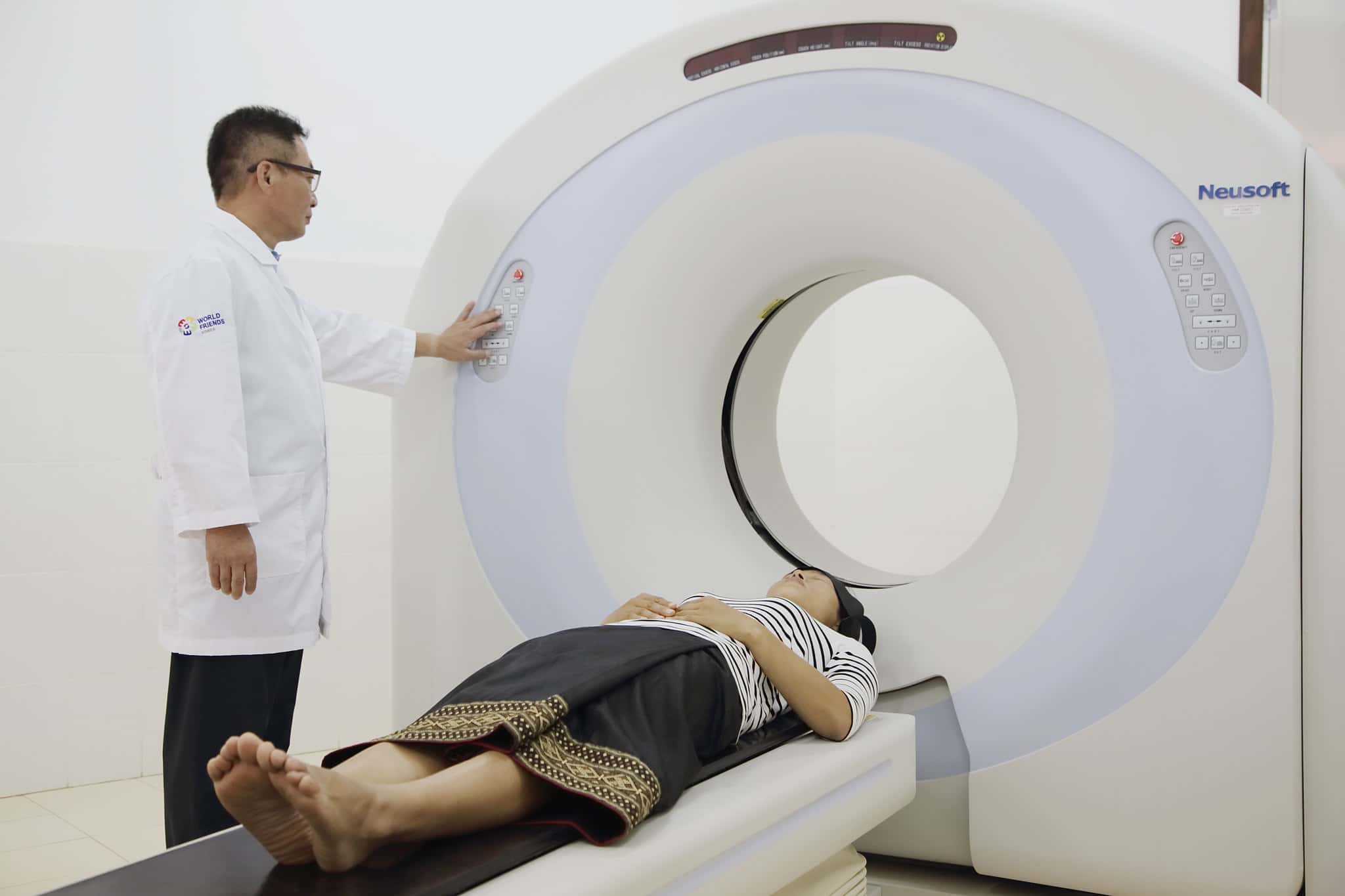A CT scan, also known as computed tomography scan, can help doctors to find cancer and will show a tumor’s shape and size. However, CT scans are expensive — and many low- and middle-income countries don’t have widespread availability of CT scanners. That may soon change as researchers have now found a way to detect lung cancer using nanosensors.

The nanosensors are delivered via an inhaler or a nebulizer. If they come across cancer-linked proteins in the lungs, they produce a signal that accumulates in the urine. This is then detected using a simple urine test. The researchers believe this could have a significant impact as cancer is expected to become more prevalent in the developing world.
“The epidemiology of lung cancer globally is that it’s driven by pollution and smoking, so we know that those are settings where accessibility to this kind of technology could have a big impact,” Prof. Sangeeta Bhatia, of the Massachusetts Institute of Technology (MIT), one of the authors of the recent study, said in a news release.
Over the past decade, Bhatia has worked on developing nanosensors for diagnosing cancer and various diseases. Now, in this study, she and her colleagues at MIT specifically investigated the potential of deploying these nanosensors as a more readily available substitute for CT screening in the context of a lung cancer diagnosis.
The sensors are made using polymer nanoparticles coated with a reporter, such as a DNA barcode, which is cleaved from the particle when the sensor comes across protease enzymes — overactive in tumors. The reporters then accumulate in the urine. Previous versions of the sensors were designed by the team to be used intravenously.
“When we developed this technology, our goal was to provide a method that can detect cancer with high specificity and sensitivity, and also lower the threshold for accessibility, so that hopefully we can improve the resource disparity and inequity in early detection of lung cancer,” Qian Zhong, study author, said in a news release.
For this purpose, the researchers created two options for the particles — a solution that can be aerosolized and a dry powder. Once the particles get to the lungs, they are absorbed into the tissue. They also created a lateral flow test that detects the reporter barcodes using a paper test strip, as mass spectrometry for urine isn’t available everywhere.
They created the strip to detect four different DNA barcodes, each indicating the presence of a different protease enzyme. The results can be read in 20 minutes after obtaining the sample and no pre-treatment is needed. “We were really pushing this assay to be point-of-care available in a low-resource setting,” Bhatia said.
The researchers tested the system in mice that were genetically engineered to develop lung tumors similar to the ones seen in humans. They measured the levels of 20 different sensors and found that the system could accurately detect early-stage lung tumors. They are hopeful similar positive results could be replicated in humans.
Now, they will work with human biopsy samples and in the longer term they hope to conduct clinical trials in humans. “The idea would be you come in and then you get an answer about whether you need a follow-up test or not, and we could get patients who have early lesions into the system so that they could get curative surgery or lifesaving medicines,” Bhatia said.
The study was published in the journal Science Advances.









